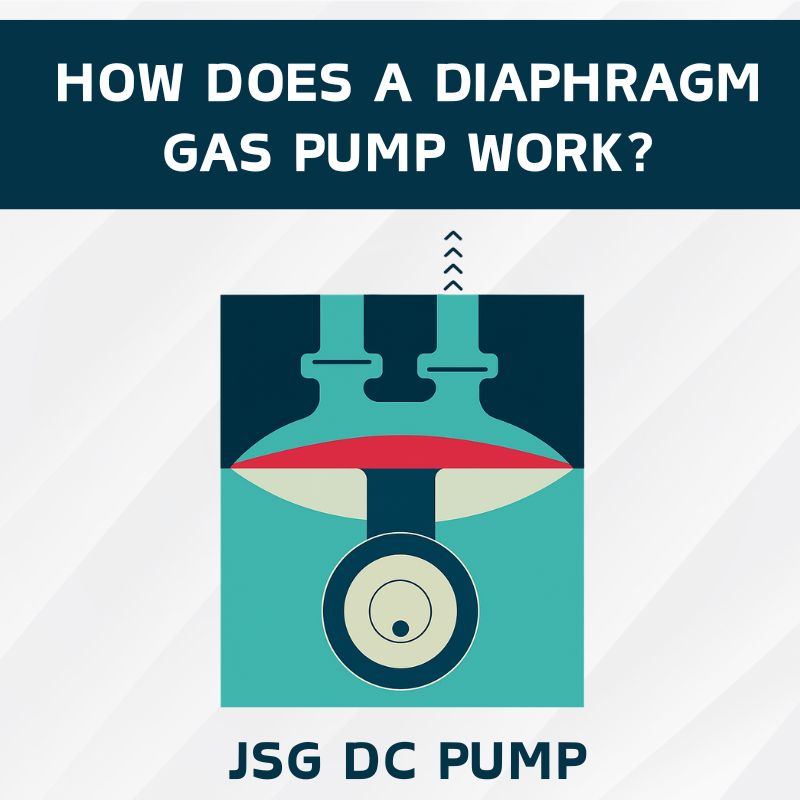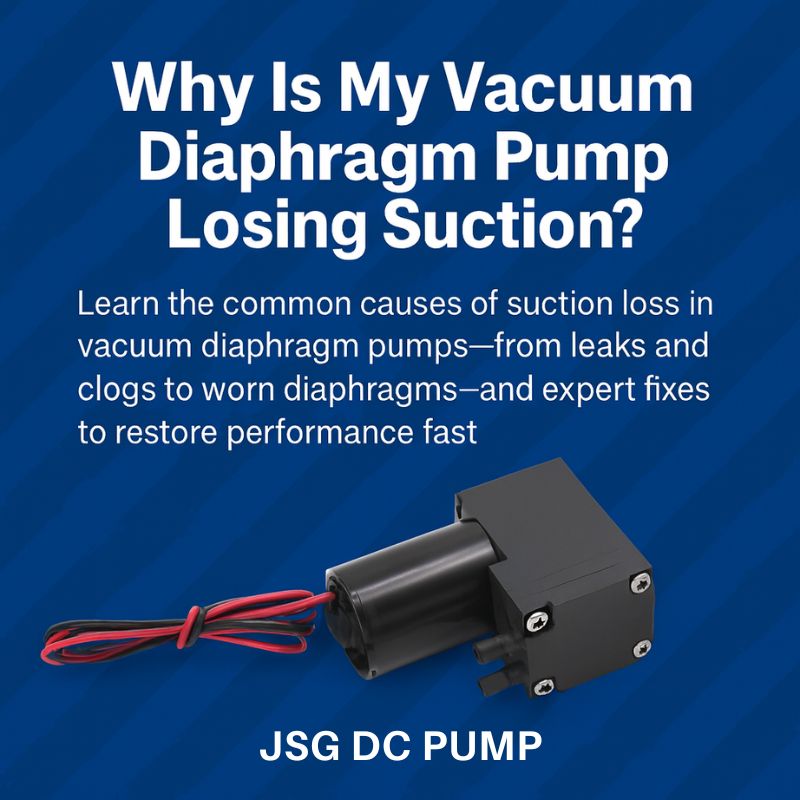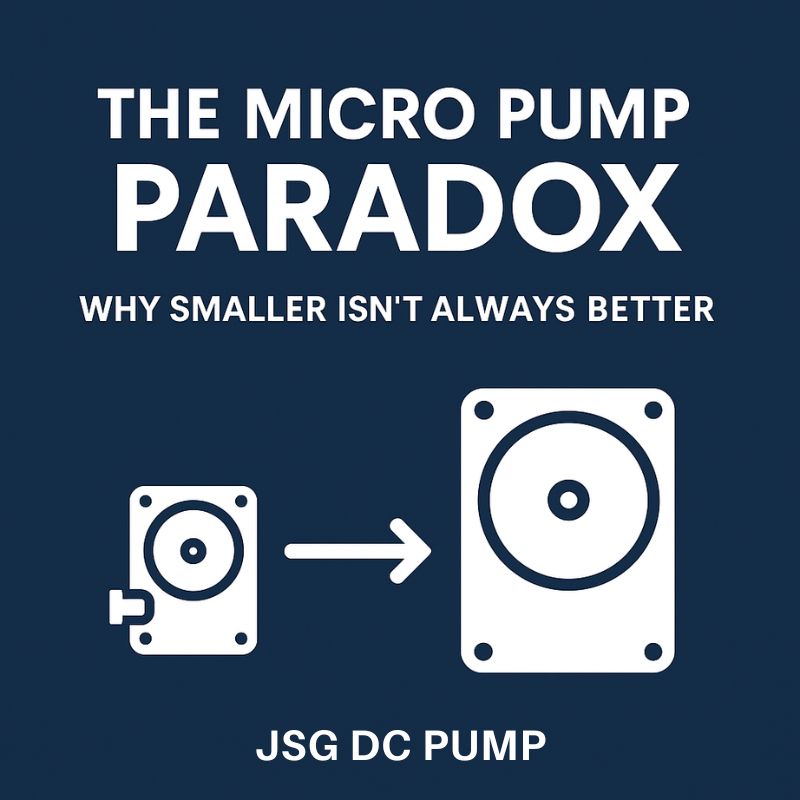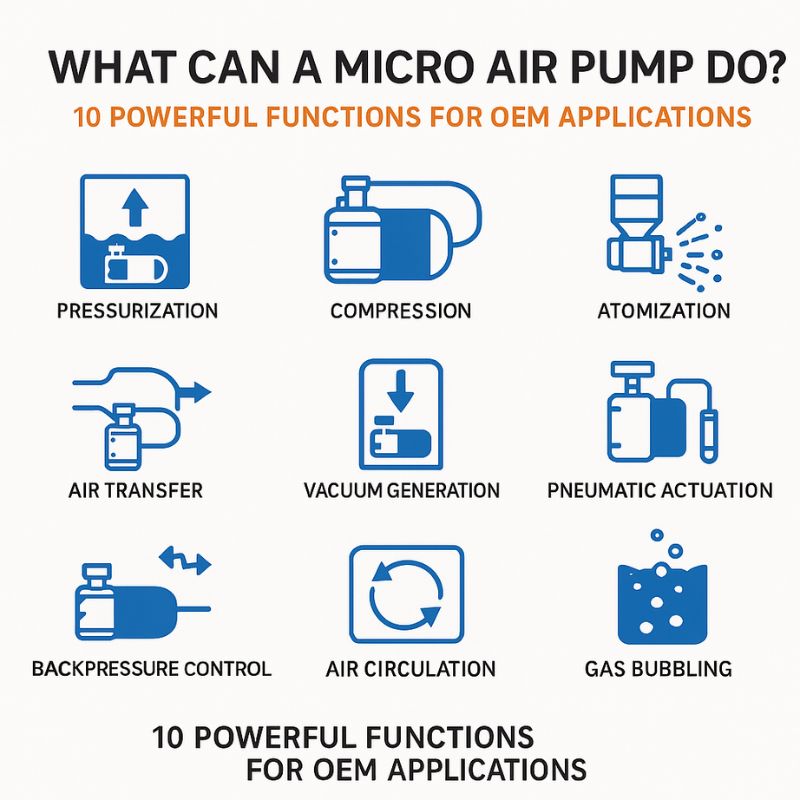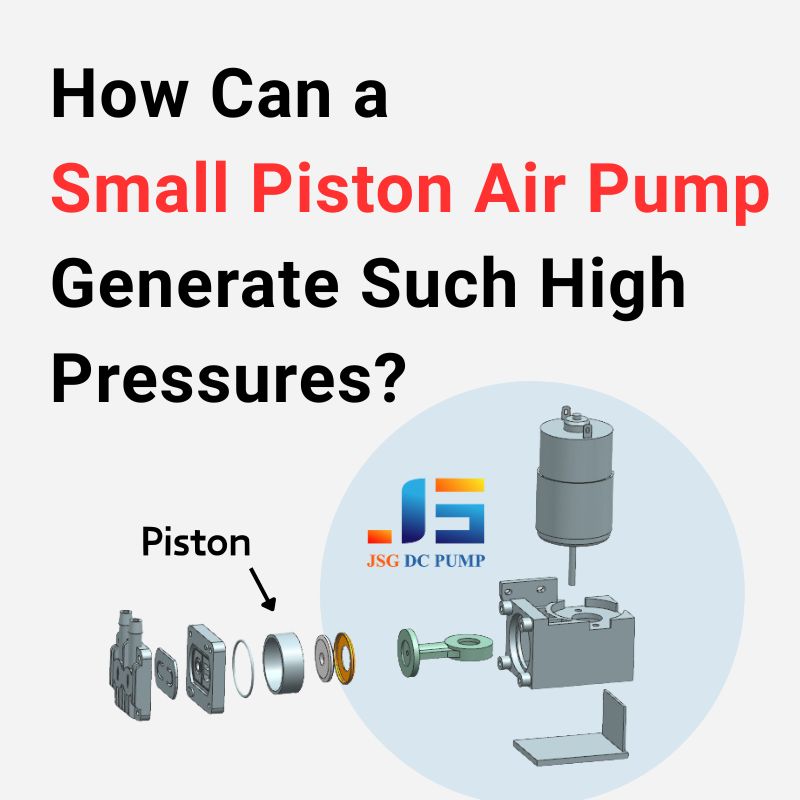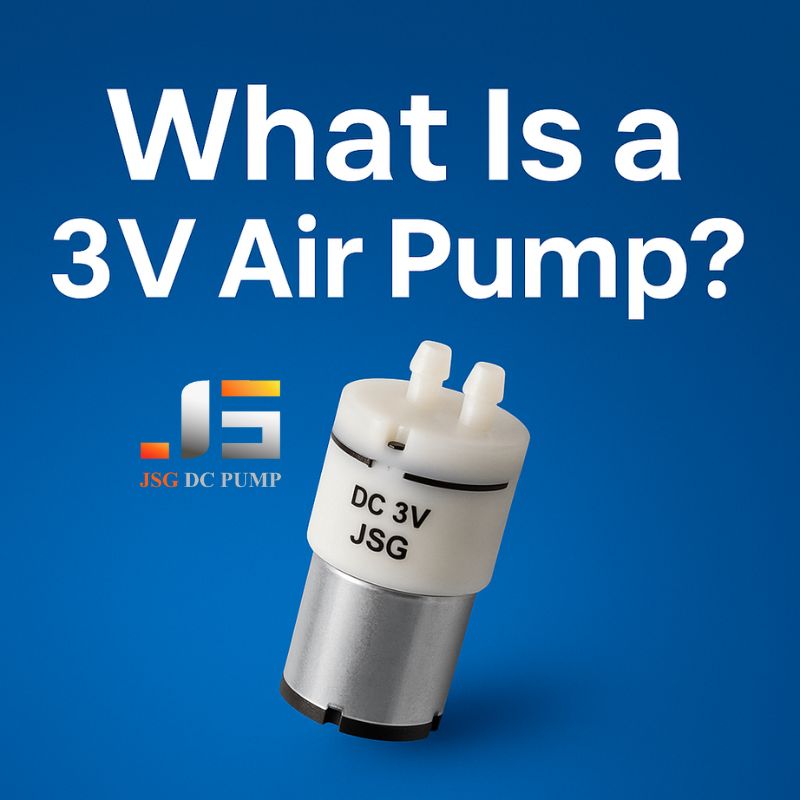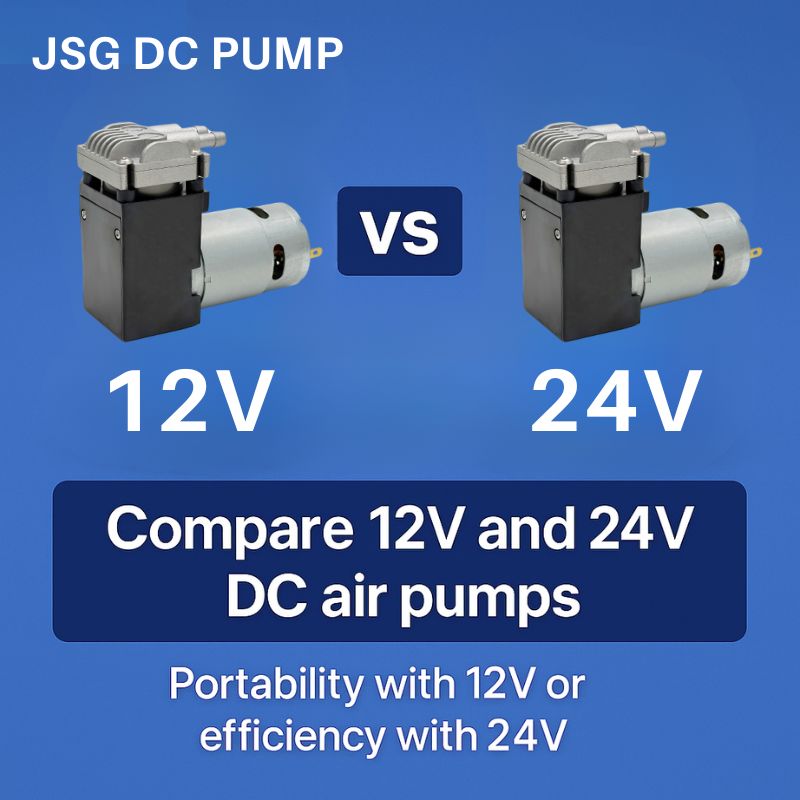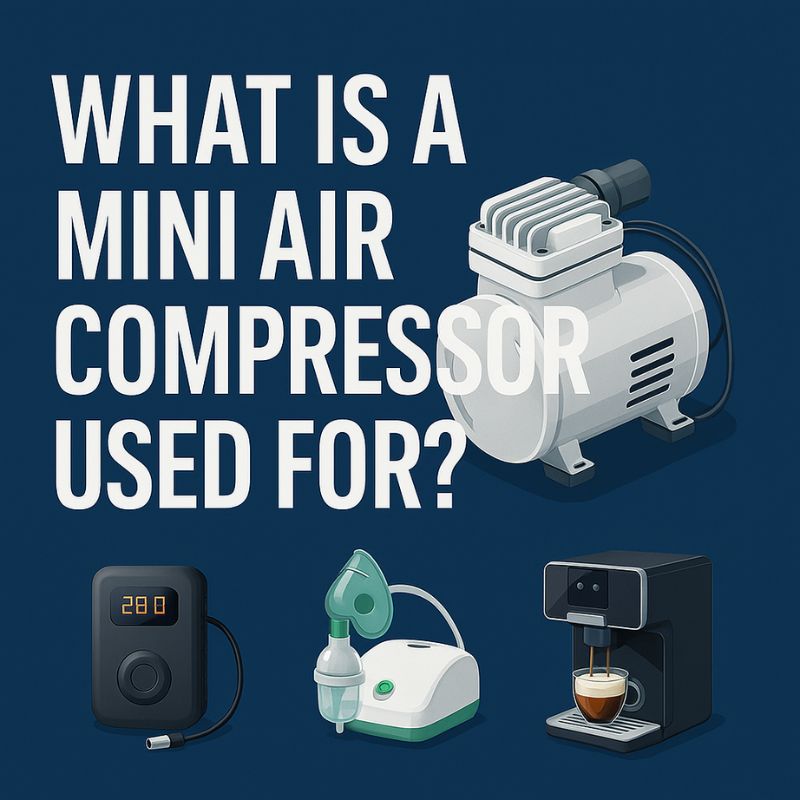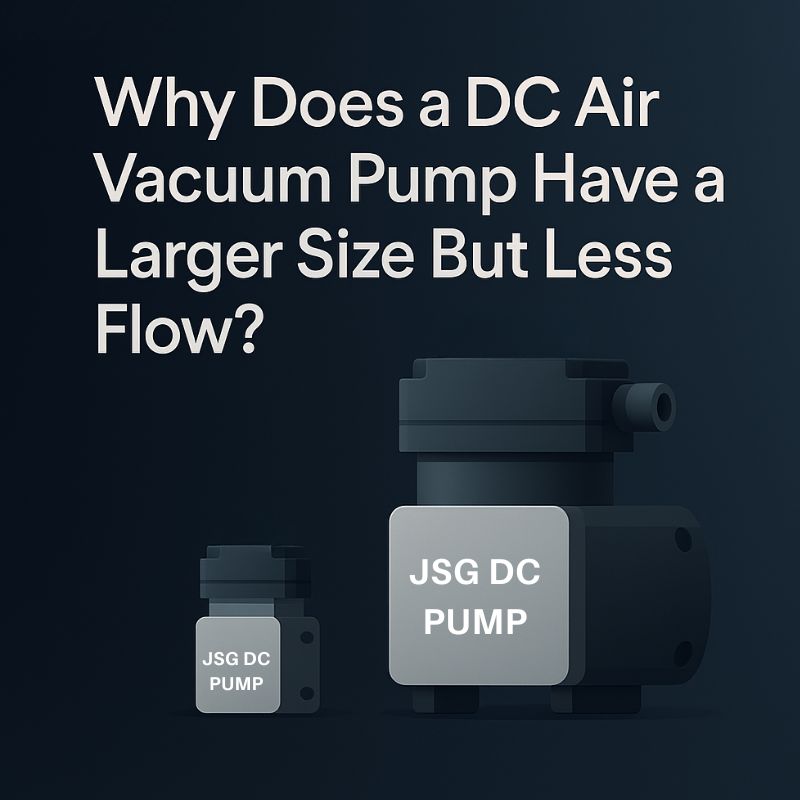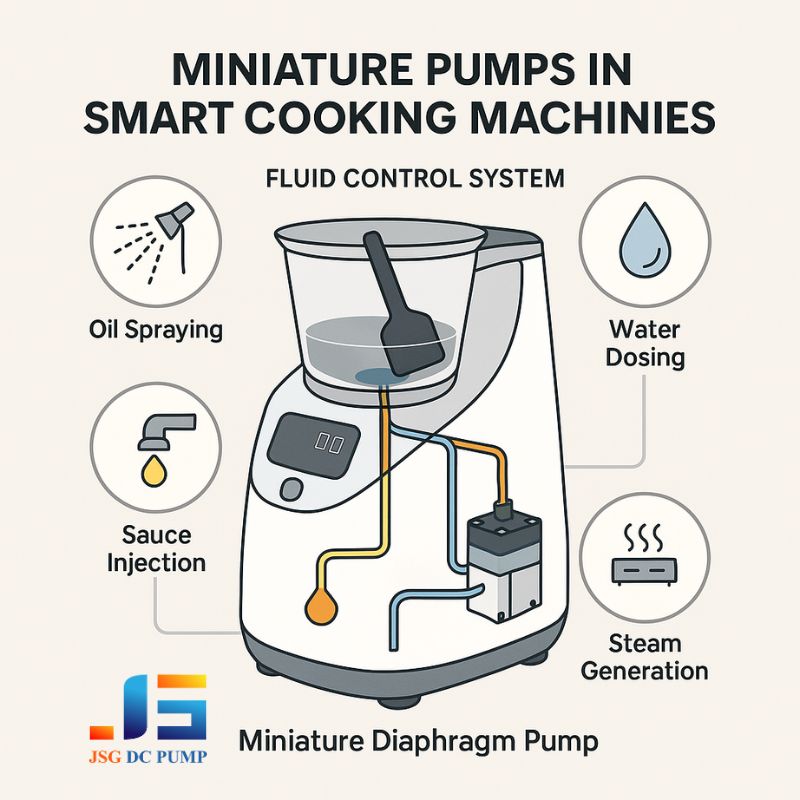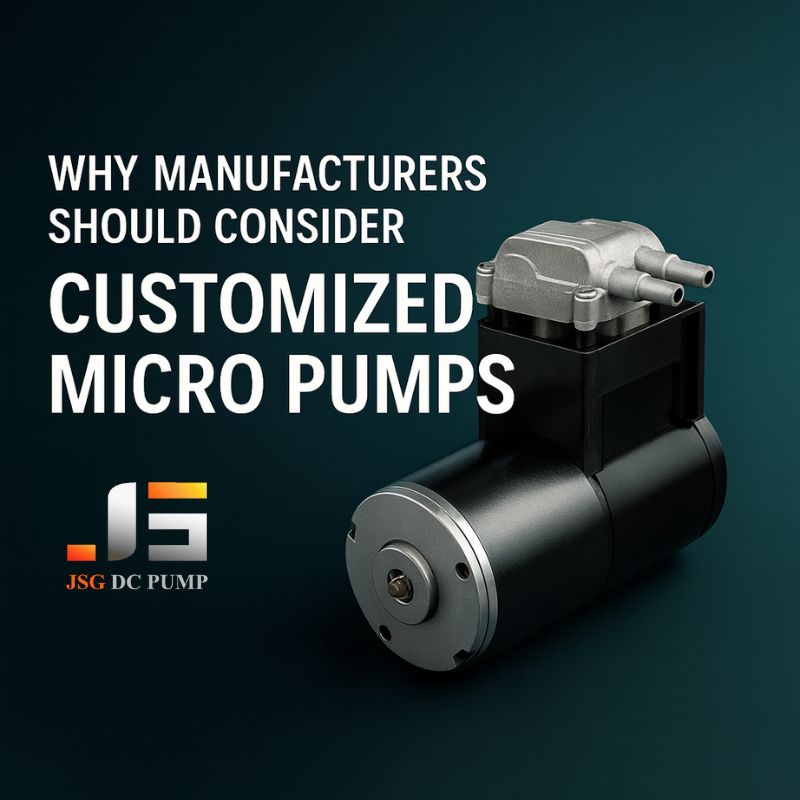Struggling to understand how a diaphragm pump works? This confusion makes it hard to choose the right one, leading to project delays and poor performance for your device.
A gas diaphragm pump uses a motor to move a flexible diaphragm up and down. This motion changes a sealed chamber’s volume, working with one-way valves to draw gas in and push it out.
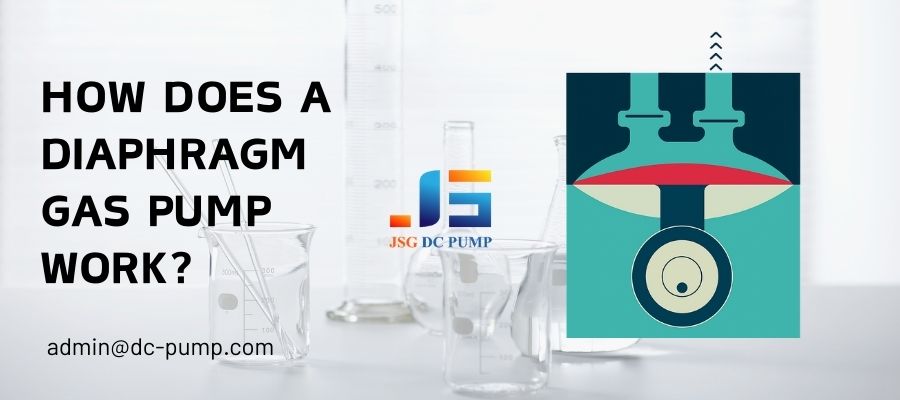
From my perspective as an engineer at JSG DC PUMP, the beauty of the diaphragm air pump is in its simplicity and reliability. It has very few moving parts, which is why it’s a go-to choice for so many critical applications. The principle is elegant and effective. Let’s dive deeper into the step-by-step cycle and explore what makes it the perfect solution for so many challenges.
What are the main components of a gas diaphragm pump?
Looking at a pump as a “black box” is confusing. If you don’t know the key parts inside, you can’t identify potential failure points or appreciate the engineering behind it.
The main components are the motor, an eccentric cam, a connecting rod, the flexible diaphragm, the pump chamber, and a set of inlet and outlet valves. Each part has a specific job.
Understanding how these parts work together demystifies the entire pump. When I’m helping a client, explaining these components helps them see why a particular model is right for them.
The motor provides the power, but the magic is in how that power is converted into airflow. The eccentric cam converts the motor’s rotation into the back-and-forth motion needed to drive the diaphragm. This movement creates both vacuum and pressure. Crucially, the diaphragm acts as a barrier, ensuring the gas being pumped never touches the mechanical parts.
| Component | Function |
|---|---|
| Motor | Provides the rotational power (brushed or brushless). |
| Eccentric Cam | Converts rotation into linear up-and-down motion. |
| Connecting Rod | Links the eccentric cam to the diaphragm assembly. |
| Diaphragm | A flexible, sealed membrane that changes chamber volume. |
| Pump Chamber | The sealed space where gas is compressed. |
| Valves (Inlet/Outlet) | One-way “flapper” valves that control gas flow. |
How does the pumping cycle work step-by-step?
You see the parts but can’t picture them moving together. This makes it hard to visualize how pressure and vacuum are actually created, leaving you confused about the pump’s core function.
The cycle has two strokes. On the downstroke, the diaphragm creates a vacuum that pulls gas in. On the upstroke, it creates pressure that pushes gas out.
This two-stroke cycle repeats thousands of times per minute to create flow. It’s helpful to break it down:
- Intake Stroke: The eccentric cam pulls the diaphragm down. This increases the volume inside the pump chamber, which lowers the pressure. This low pressure (vacuum) pulls the flexible inlet valve open and sucks gas into the chamber. At the same time, the pressure outside keeps the outlet valve shut.
- Exhaust Stroke: The eccentric cam pushes the diaphragm up. This decreases the chamber volume, compressing the gas and increasing the pressure. This high pressure forces the inlet valve shut and pushes the outlet valve open, expelling the gas.
This simple, continuous mechanical dance is what makes the pump work.
| Stroke | Diaphragm Motion | Chamber Pressure | Inlet Valve | Outlet Valve | Result |
|---|---|---|---|---|---|
| Intake | Moves Down | Decreases (Vacuum) | Opens | Closes | Gas is drawn in. |
| Exhaust | Moves Up | Increases (Pressure) | Closes | Opens | Gas is pushed out. |
What are the advantages of using a diaphragm pump?
You know how it works, but is it right for your project? Choosing a pump based on its mechanism alone could mean you miss out on key performance benefits or select the wrong technology.
The main advantages are its oil-free operation, leak-proof design, and ability to run dry without damage. This makes diaphragm pumps exceptionally clean, reliable, and versatile for sensitive applications.
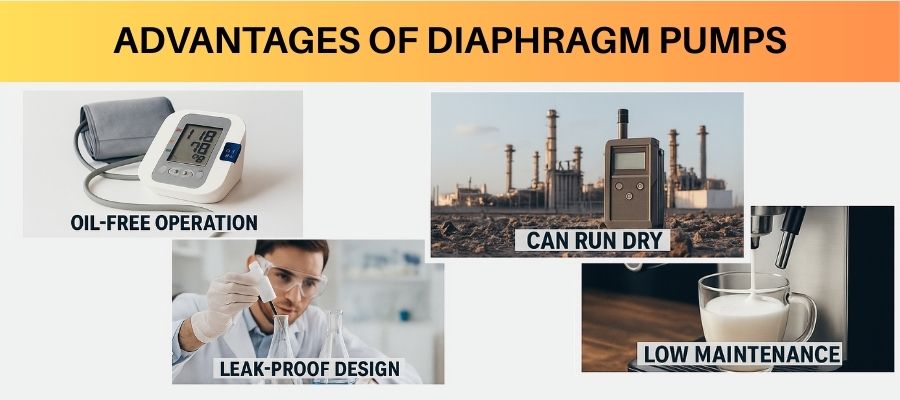
These advantages are why I so often recommend diaphragm pumps for sensitive applications. The key benefits for a designer are:
- Oil-Free Operation: This is the most important feature. The diaphragm completely seals the mechanical parts from the gas path. No oil or grease lubricants can contaminate the gas, which is essential for medical, lab, and food-grade applications.
- Can Run Dry: The pump can operate continuously with no gas flow without overheating or damage. This adds a huge layer of reliability to your device, as you don’t need complex sensors to protect the pump.
- Leak-Proof Design: The sealed chamber means the gas being pumped cannot leak out into the atmosphere. This is critical when handling expensive, rare, or hazardous gases.
- Low Maintenance: The design eliminates sliding seals, so there are no seals to wear out. The diaphragm and valves are the only service parts, and they are built for extended lifespans.
Are all diaphragm pumps the same?
You might think all diaphragm pumps are created equal. This assumption could lead you to choose a simple pump when your application really needs the higher performance of a multi-head model.
No, they vary in key ways. The main differences are the number of pump heads and how they are configured: in parallel for high flow or in series for high pressure.
Matching the pump configuration to the application is key. Here are the main types I work with at JSG DC PUMP:
- Single-Head Pumps: This is the basic configuration. It’s simple, compact, and cost-effective. It produces a pulsed flow that is perfect for many general-purpose applications.
- Dual-Head Pumps (Parallel): Here, a single motor drives two pump heads. We connect them in parallel, so they draw from the same source and exhaust to the same outlet. This doubles the flow rate and smooths out the pulses. It’s ideal for quickly evacuating a chamber.
- Dual-Head Pumps (Series): In this setup, the outlet of the first head feeds into the inlet of the second. This doesn’t increase flow, but it multiplies the pressure or vacuum. This is essential for achieving the deep vacuums needed in scientific instruments.
| Configuration | Best For… | Key Characteristic |
|---|---|---|
| Single-Head | General purpose, cost-sensitive projects. | Simple, compact, produces a pulsed flow. |
| Dual-Head (Parallel) | High-flow applications. | Doubles the flow rate of a single head. |
| Dual-Head (Series) | High-pressure or deep-vacuum. | Multiplies the pressure/vacuum level. |
What are diaphragm pumps actually used for?
You understand the theory, but you’re not sure where this technology fits in the real world. Without concrete examples, it’s hard to know if a diaphragm pump is a standard, proven solution for your industry.
Diaphragm pumps are used everywhere, from portable medical devices and environmental gas analyzers to coffee machines and lab equipment. Their oil-free, reliable nature makes them ideal for any application that requires clean air transfer.
It’s always exciting to see the range of devices our pumps go into. Their core benefits make them a perfect fit for a huge variety of markets.
In the medical field, their oil-free nature is critical for patient safety. For environmental monitoring, their long life and ability to run continuously is essential for collecting accurate data. Even in household appliances like coffee machines, their compact size and efficiency are a perfect fit for creating foam or moving liquids. If you need to move a small amount of air or gas cleanly and reliably, a diaphragm pump is often the first technology you should consider.
| Industry | Example Application | Why a Diaphragm Pump is Chosen |
|---|---|---|
| Medical | Blood pressure monitors, nebulizers | Oil-free, high reliability, low noise |
| Laboratory | Vacuum filtration, gas sampling | Chemical resistance, can run dry |
| Environmental | Portable air quality monitors | Long life, low power consumption |
| Food & Beverage | Coffee machine aeration, drink dispensing | Clean air, food-grade materials |
How do diaphragm pumps work in common fields?
You know the pump’s benefits, but how do they apply to your specific industry? Without concrete examples, you might miss out on the perfect solution for your device’s needs.
In each field, the pump provides clean, oil-free gas movement. It creates suction for beauty tools and samplers, pressure for medical nebulizers, and reliable airflow for industrial equipment.
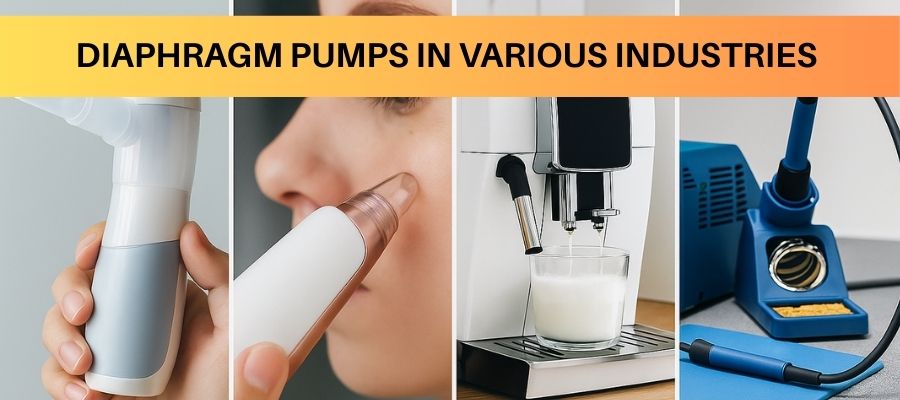
As an engineer, it’s fascinating to see the same core technology adapted for so many different uses. The key is always matching the pump’s characteristics—like flow, pressure, and materials—to the job. Here’s a breakdown of how our pumps function in these specific areas:
| Field | Specific Application | How the Diaphragm Pump Works |
|---|---|---|
| Medical | Nebulizer | Creates oil-free compressed air to turn liquid medicine into a fine, inhalable mist. |
| Beauty | Blackhead Vacuum Tool | Generates controlled suction (vacuum) to gently pull impurities from skin pores. |
| Small Appliances | Coffee Machine Milk Frother | Pushes a stream of clean, food-safe air into milk to create a rich, dense foam. |
| Sampling | Portable Gas Detector | Continuously draws a precise sample of air across a sensor to detect hazardous gases. |
| Small Power Tools | Dust Extraction System | Creates a powerful vacuum to pull sawdust and debris away from a cutting area. |
| Industrial | Inkjet Coder | Provides a slight vacuum to keep ink nozzles clean or positive pressure to the ink supply. |
Should you choose a brushed or brushless motor for your pump?
You’ve decided on a diaphragm pump, but now you face another choice: the motor. Picking the wrong motor can undermine all the benefits of the pump, leading to early failure or unnecessary costs.
Choose a brushless motor for long-life, continuous-duty applications where reliability and control are critical. Choose a brushed motor for intermittent-use devices where initial cost is the most important factor.
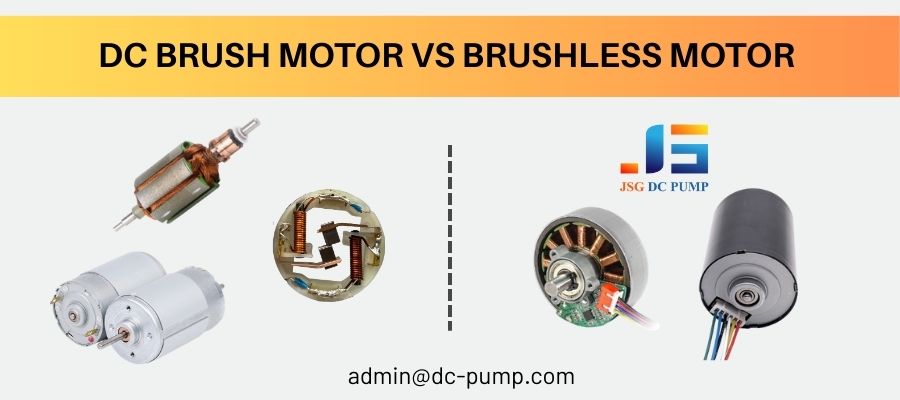
This is a conversation I have with designers every day. The motor drives the pump, and you should choose between brushed and brushless based on how you plan to use the device.
- Brushed Motors are simple and cost-effective. The physical wear of their carbon brushes limits their lifespan, typically to a few thousand hours. This makes them ideal for devices used only a few minutes a day.
- Brushless Motors are for the long haul. Without wearing brushes, the bearings determine their lifespan, which often exceeds 10,000 hours. They are the only real option for medical or industrial equipment that must run 24/7 for years.
| Motor Type | Best For | Lifespan | Key Consideration |
|---|---|---|---|
| Brushed DC | Intermittent use, cost-sensitive projects | ~300-1,500 hours | Lower initial cost |
| Brushless DC | Continuous use, high-reliability needs | 10,000+ hours | Lower total cost of ownership |
Why trust JSG DC PUMP with your project?
Choosing the wrong pump supplier leads to poor quality and project failure. You need a partner with deep engineering experience, not just a reseller, to ensure your device succeeds.
With over 22 years of R&D and manufacturing experience, we are a world-leading micro pump supplier. Our expertise covers over 300 pump prototypes for industries from medical to automotive.
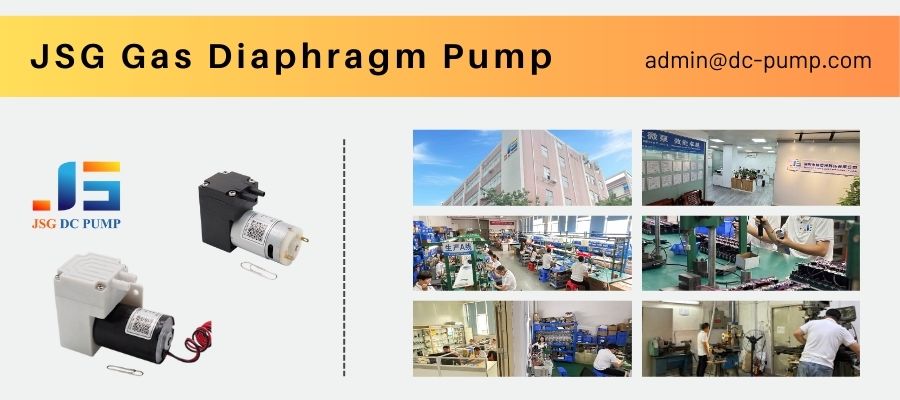
I’m proud to be an engineer at JSG DC PUMP because we are more than just a manufacturer; we are fluid solution specialists. Our 22 years in the business and decade of global exports mean we’ve solved almost every micro pump challenge imaginable. This experience is built into every product we make.
We don’t force a one-size-fits-all solution. Our catalog has over 300 pump prototypes, so we can work with you to find the exact pump that meets your needs for pressure, flow, low noise, and long life.
We also support full OEM and ODM partnerships. This means we can build a pump to your exact specifications or help you design a new one from scratch. Our mission is to be your ideal partner, providing the high-quality, reliable pumps that your products deserve.
Conclusion
Diaphragm pumps offer clean, reliable gas transfer through an elegant mechanism. For expert help selecting the perfect configuration for your device, contact the JSG DC PUMP team today.


